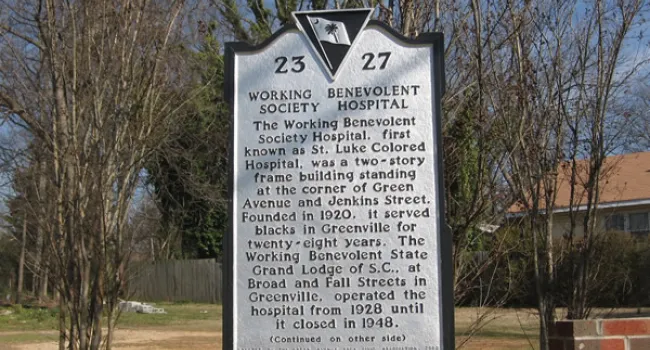This building, built in 1901, was occupied by McCrory's Five & Dime from 1937 to 1997. On February 12, 1960, black students from Friendship Jr. College in Rock Hill were denied service at the McCrory's lunch counter but refused to leave.
Their "sit-in" was one of the first of many calling attention to segregated public places in downtown Rock Hill. These protests lasted for more than a year. (Reverse) "FRIENDSHIP NINE" Many Rock Hill protesters were arrested, convicted, and fined.
On January 31, 1961, ten students from Friendship Jr. College were arrested when they refused to leave McCrory's. Nine would not pay their fines and became the first Civil Rights sit-in protesters in the nation to serve jail time.
This new "Jail No Bail" strategy by "the Friendship Nine" was soon adopted as the model strategy for the Freedom Rides of 1961. Erected by the Culture & Heritage Museums of York County and the City of Rock Hill, 2007.
Standards
- This indicator was developed to promote inquiry into how the lifestyles of those living in capitalist countries differed from those living in communist countries. This indicator was also designed to promote inquiry into how the rights of citizens differed in capitalist and communist countries.
- 8-7 The student will demonstrate an understanding of the impact on South Carolina of significant events of the late twentieth and early twenty-first centuries.
- This indicator was designed to foster inquiry into the role of South Carolina in the Modern Civil Rights Movement, to include the influence of court cases such as Briggs v. Elliot and Flemming v. South Carolina Electric and Gas. This indicator was also developed to promote inquiry into the relationship between national leadership, protests, and events and South Carolina leadership, protests and events, such as the Friendship Nine and the Orangeburg Massacre.













